
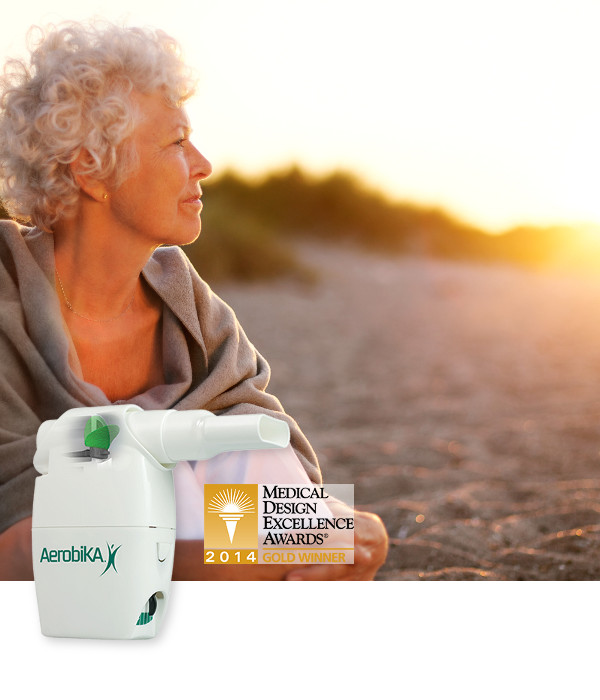
The AEROBIKA® OPEP Advantage
- Drug free, natural airway clearance
- Clinically proven to assist mucus clearancei
- Decreases cough frequencyi
- Reduces COPD exacerbations by 28% in the critical 30 day periodii
- Can help prevent 1 hospitalization for every 17 patients treated within 30 daysii
- Improves lung function and ventilation in COPDi
- Cost effective addition to standard of careiii
- Purpose designed aerosol pathway for effective combined treatments
AEROBIKA® OPEP Device
The AEROBIKA® OPEP device has been clinically proven to reduce exacerbations, increase lung function and enhance patient quality of life.iv It is designed to be easy-to-use and its unique pressure-oscillation dynamic works with the natural process in the lungs to assist in mucus clearance.
How it Works
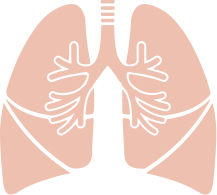
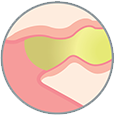
Airways inflamed, collapsed, and plugged with mucus.
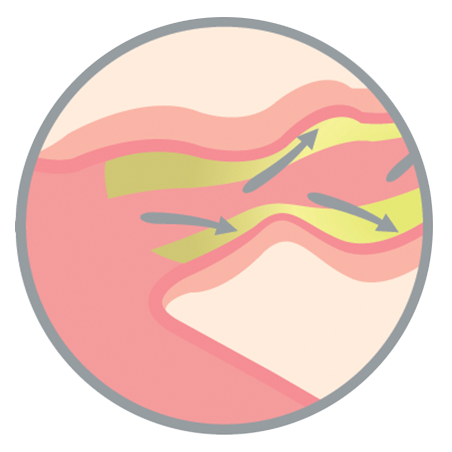
As you exhale through the device, positive pressure will hold the airways open. Think of how you feel when you blow up a balloon. It is the positive pressure that holds the balloon open. Inside your lungs, the positive pressure opens up small airways that may be blocked by mucus.
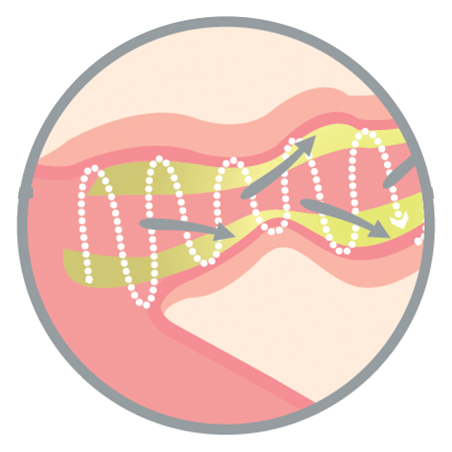
As the airways open, the device switches quickly between higher and lower resistance. This may feel like vibrations or pulses which act to loosen the mucus from the walls of your lungs. The frequency of the oscillations closely match the ones within your lungs, helping move mucus to the larger airways. This makes it easier for you to cough up the secretions.
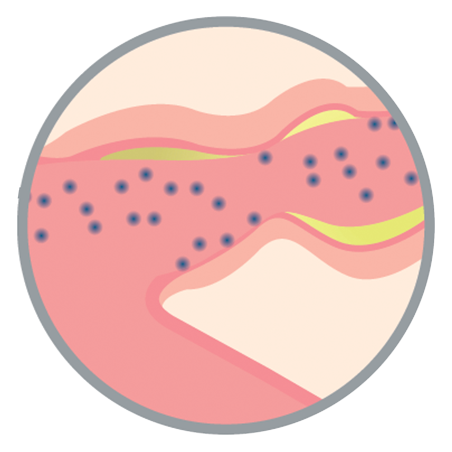
With the airways opened and the mucus moved out of the airways, your inhaled medication may work better.v
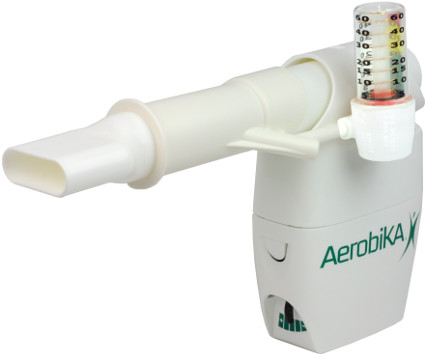
Optional Pressure Manometer
- Helps develop proper technique and actively engages patient in therapy
- Provides immediate feedback with a visual goal
- Helps achieve therapeutic pressure every time to maximize treatment effectiveness
- I Svenningsen S. et al. COPD 2016;13(1):66 – 74.
- II Burudpakdee C, et al. Pulmonary Therapy 2017; 3(1): 163–171.
- III Khoudigian S, et al. Submitted for publication 2017
- IV Burudpakdee C, et al. Pulmonary Therapy 2017; 3(1): 163–171. and Svenningsen S. et al. COPD 2016;13(1):66 – 74.
- V Wolkove N, et al. CHEST 2002;121(3):702-7.
These are abbreviated instructions for use, please remember to read the complete instructions that are packaged with your AEROBIKA® OPEP Device. Download our Full Instruction Guide here.
How To Use
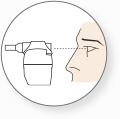
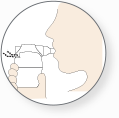
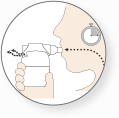
- Examine the device.
- Choose any orientation.
- Seal lips tightly around the mouthpiece.
- Inhale deeply and hold breath for 2 – 3 seconds.
- Exhale for 3 – 4 times longer than on inhalation.
- Continue for 10 to 20 breaths or as instructed by your healthcare professional.
- Perform 2 – 3 ‘huff’ coughs to clear the airway.
- Repeat steps 3 – 7 for 10 to 20 minutes or as prescribed.
- I Svenningsen S. et al. COPD 2016;13(1):66 – 74.
- II Burudpakdee C, et al. Pulmonary Therapy 2017; 3(1): 163–171.
- III Khoudigian S, et al. Submitted for publication 2017
- IV Burudpakdee C, et al. Pulmonary Therapy 2017; 3(1): 163–171. and Svenningsen S. et al. COPD 2016;13(1):66 – 74.
- V Wolkove N, et al. CHEST 2002;121(3):702-7.
These are abbreviated cleaning instructions, please remember to read the complete instructions that are packaged with your AEROBIKA® OPEP Device. Download our Full Instruction Guide here.
Cleaning
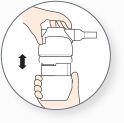
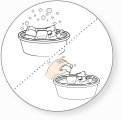
- Press tabs to release.
- Remove valve cartridge and mouthpiece.
- Soak 15 minutes in soapy water, agitate gently and rinse.
- Shake out water and dry vertically or place in a dishwasher basket on the top rack after performing cleaning instructions 1 and 2. Full dishwasher instructions can be found with the complete instructions for use packaged with the device.
- Once it is thoroughly dry, reassemble the device.
- I Svenningsen S. et al. COPD 2016;13(1):66 – 74.
- II Burudpakdee C, et al. Pulmonary Therapy 2017; 3(1): 163–171.
- III Khoudigian S, et al. Submitted for publication 2017
- IV Burudpakdee C, et al. Pulmonary Therapy 2017; 3(1): 163–171. and Svenningsen S. et al. COPD 2016;13(1):66 – 74.
- V Wolkove N, et al. CHEST 2002;121(3):702-7.

